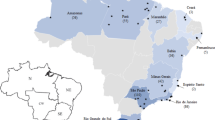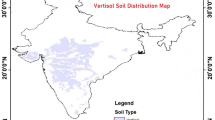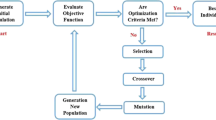Abstract
The water retention curve (WRC) describes the nonlinear relation of soil water content (SWC) and matric potential. Since direct measurement of SWC and matric potential is difficult and time consuming, indirect approaches including statistical, numerical, and pattern recognition-based pedo-transfer functions (PTFs) that relate basic soil properties to the WRC have been developed during the last few decades. Although several studies reporting the performance of these models can be found in literature, it seems that an extensive investigation which compares the available models and introduces a reliable method to soil hydrologists can be useful. Therefore, in this study, the performance of multiple linear regressions (MLR) models, scaled numerical models and machine learning methods including artificial neural networks (ANN) and adaptive neuro-fuzzy inference systems (ANFIS) are compared using 98 UNSODA codes with various soil textures to estimate WRC. Results showed that regardless of the soil texture, ANN (RMSE = 0.029) predicts the WRC more accurately than ANFIS (RMSE = 0.035), scaled model (RMSE = 0.060) and MLR (RMSE = 0.071), respectively. Considering the soil texture, ANFIS performance is the best in the moderate and fine textured soils, while scaled numerical model predicts with acceptable performance in sandy soils. WRC prediction using easily available soil characteristics particularly when there is a lack of data, shows that newly developed machine learning methods are capable of predicting WRC considerably accurate for sustainable water flow and solute transport management.





Similar content being viewed by others
REFERENCES
A. C. Resurreccion, P. Moldrup, M. Tuller, T. Ferré, K. Kawamoto, T. Komatsu, and L. W. de Jonge, “Relationship between specific surface area and the dry end of the water retention curve for soils with varying clay and organic carbon contents,” Water Resour. Res. 47, W06522 (2011). https://doi.org/10.1029/2010WR010229
A. D. Nemes, M. Schaap, F. Leij, and J. Wösten, “Description of the unsaturated soil hydraulic database UNSOD-A version 2.0,” J. Hydrol. 251, 151–162 (2001). https://doi.org/10.1016/S0022-1694(01)00465-6
A. Elshorbagy and K. Parasuraman, “On the relevance of using artificial neural networks for estimating soil moisture content,” J. Hydrol. 362, 1–18 (2008). https://doi.org/10.1016/j.jhydrol.2008.08.01
A. Erofeev, D. Orlov, A. Ryzhov, and D. Koroteev, “Prediction of porosity and permeability alteration based on machine learning algorithms,” Transp. Porous Med. 128, 677–700 (2019).
A. Garg, A. Garg, W.-H. Zhou, K. Tai, and M. Deo, “A new simulation approach of genetic programming in modelling of soil water retention property of unsaturated soil,” Eng. Comput. 32, 914–930 (2015). https://doi.org/10.1108/EC-05-2014-0110
A. Haghverdi, W. Cornelis, and B. Ghahraman, “A pseudo-continuous neural network approach for developing water retention pedotransfer functions with limited data,” J. Hydrol. 442, 46–54 (2012). https://doi.org/10.1016/j.jhydrol.2012.03.036
A. Hashemi, K. Asefpour Vakilian, J. Khazaei, and J. Massah, “An artificial neural network modeling for force control system of a robotic pruning machine,” J. Inf. Org. Sci. 38, 35–41 (2014).
A. H. Alavi, A.H. Gandomi, A. Mollahassani, A. A. Heshmati, and A. Rashed, “Modeling of maximum dry density and optimum moisture content of stabilized soil using artificial neural networks,” J. Plant Nutr. Soil Sci. 173, 368–379 (2010). https://doi.org/10.1002/jpln.200800233
A. Jafarzadeh, M. Pal, M. Servati, M. FazeliFard, and M. Ghorbani, “Comparative analysis of support vector machine and artificial neural network models for soil cation exchange capacity prediction,” Int. J. Environ. Sci. Technol. 13, 87–96 (2016). https://doi.org/10.1007/s13762-015-0856-4
A. Kamari, A. H. Mohammadi, M. Lee, and A. Bahadori, “Decline curve based models for predicting natural gas well performance,” Petroleum 3, 242–248 (2017). https://doi.org/10.1016/j.petlm.2016.06.006
A. Keshavarzi, F. Sarmadian, M. Sadeghnejad, and P. Pezeshki, “Developing pedotransfer functions for estimating some soil properties using artificial neural network and multivariate regression approaches,” Proenvironment 3, 322–330 (2010).
A. Nemes, M. Schaap, and J. Wösten, “Functional evaluation of pedotransfer functions derived from different scales of data collection,” Soil Sci. Soc. Am. J. 67, 1093–1102 (2003). https://doi.org/10.2136/sssaj2003.1093
C. Antinoro, V. Bagarello, V. Ferro, G. Giordano, and M. Iovino, “A simplified approach to estimate water retention for Sicilian soils by the Arya–Paris model,” Geoderma 213, 226–234 (2014). https://doi.org/10.1016/j.geoderma.2013.08.004
C. T. Silveira, C. Oka-Fiori, L. J. C. Santos, A. E. Sirtoli, C. R. Silva, and M. F. Botelho, “Soil prediction using artificial neural networks and topographic attributes,” Geoderma 195, 165–172 (2013). https://doi.org/10.1016/j.geoderma.2012.11.016
D. K. Jensen, M. Tuller, L. W. de Jonge, E. Arthur, and P. Moldrup, “A new two-stage approach to predicting the soil water characteristic from saturation to oven-dryness,” J. Hydrol. 521, 498–507 (2015). https://doi.org/10.1016/j.jhydrol.2014.12.018
D. Karup, P. Moldrup, M. Tuller, E. Arthur, and L. Jonge, “Prediction of the soil water retention curve for structured soil from saturation to oven dryness,” Eur. J. Soil Sci. 68, 57–65 (2017). https://doi.org/10.1111/ejss.12401
D. Li, G. Gao, M. Shao, and B. Fu, “Predicting available water of soil from particle-size distribution and bulk density in an oasis–desert transect in northwestern China,” J. Hydrol. 538, 539–550 (2016).https://doi.org/10.1016/j.jhydrol.2016.04.046
D. Zhao, W. Ni, and Q. Zhu, “A framework of neural networks based consensus control for multiple robotic manipulators,” Neurocomputing 140, 8–18 (2014).https://doi.org/10.1016/j.neucom.2014.03.041
E. Arthur, M. Tuller, P. Moldrup, D. K. Jensen, and L. W. de Jonge, “Prediction of clay content from water vapor sorption isotherms considering hysteresis and soil organic matter content,” Eur. J. Soil Sci. 66, 206–217 (2015). https://doi.org/10.1111/ejss.12191
E. Olyaie, H. Banejad, K.-W. Chau, and A. M. Melesse, “A comparison of various artificial intelligence approaches performance for estimating suspended sediment load of river systems: a case study in United States,” Environ. Monit. Assess. 187, 189 (2015). https://doi.org/10.1007/s10661-015-4381-1
F. H. Fashi, “Evaluation of adaptive neural-based fuzzy inference system approach for estimating saturated soil water content,” Model. Earth Syst. Environ. 2, 197 (2016). https://doi.org/10.1007/s40808-016-0255-y
F. Karandish and J. Šimůnek, “A comparison of numerical and machine-learning modeling of soil water content with limited input data,” J. Hydrol. 543, 892–909 (2016). https://doi.org/10.1016/j.jhydrol.2016.11.007
F. Meskini-Vishkaee, M. H. Mohammadi, and M. Vanclooster, “Predicting the soil moisture retention curve, from soil particle size distribution and bulk density data using a packing density scaling factor,” Hydrol. Earth Syst. Sci. 18, 4053–4063 (2014). https://doi.org/10.5194/hess-18-4053-2014
H. Ghorbani, H. Kashi, N. Hafezi Moghadas, and S. Emamgholizadeh, “Estimation of soil cation exchange capacity using multiple regression, artificial neural networks, and adaptive neuro-fuzzy inference system models in Golestan Province, Iran,” Commun. Soil Sci. Plan. 46, 763–780 (2015). https://doi.org/10.1080/00103624.2015.1006367
H. Jiang and W. R. Cotton, “Soil moisture estimation using an artificial neural network: a feasibility study,” Can. J. Remote Sens. 30, 827–839 (2004). https://doi.org/10.5589/m04-041
H. Khodaverdiloo, M. Homaee, M. T. van Genuchten, and S. G. Dashtaki, “Deriving and validating pedotransfer functions for some calcareous soils,” J. Hydrol. 399, 93–99 (2011). https://doi.org/10.1016/j.jhydrol.2010.12.040
H. Puhlmann and K. von Wilpert, “Pedotransfer functions for water retention and unsaturated hydraulic conductivity of forest soils,” J. Plant Nutr. Soil Sci. 175, 221–235 (2012). https://doi.org/10.1002/jpln.201100139
H. Tabari, O. Kisi, A. Ezani, and P. H. Talaee, “SVM, ANFIS, regression and climate based models for reference evapotranspiration modeling using limited climatic data in a semi-arid highland environment,” J. Hydrol. 444, 78–89 (2012). https://doi.org/10.1016/j.jhydrol.2012.04.007
H. Vereecken, A. Schnepf, J. W. Hopmans, M. Javaux, D. Or, T. Roose, J. Vanderborght, M. H. Young, W. Amelung, M. Aitkenhead, and S. D. Allison, “Modeling soil processes: review, key challenges, and new perspectives,” Vadose Zone J. 15, 1–57 (2016). https://doi.org/10.2136/vzj2015.09.0131
H. Vereecken, M. Weynants, M. Javaux, Y. Pachepsky, M. Schaap, and M. T. Genuchten, “Using pedotransfer functions to estimate the van Genuchten–Mualem soil hydraulic properties: a review,” Vadose Zone J. 9, 795–820 (2010). https://doi.org/10.2136/vzj2010.0045
H. Vereecken, J. Maes, J. Feyen, and P. Darius, “Estimating the soil moisture retention characteristic from texture, bulk density, and carbon content,” Soil Sci. 148, 389-403 (1989).
I. Yilmaz and O. Kaynar, “Multiple regression, ANN (RBF, MLP) and ANFIS models for prediction of swell potential of clayey soils,” Exp. Syst. Appl. 38, 5958–5966 (2011). https://doi.org/10.1016/j.eswa.2010.11.027
J. Deng, X. Chen, Z. Du, and Y. Zhang, “Soil water simulation and predication using stochastic models based on LS-SVM for red soil region of China,” Water Resour. Manage. 25, 2823–2836 (2011). https://doi.org/10.1007/s11269-011-9840-z
J. Seyedmohammadi, L. Esmaeelnejad, and H. Ramezanpour, “Determination of a suitable model for prediction of soil cation exchange capacity,” Model. Earth Syst. Environ. 2, 156 (2016). https://doi.org/10.1007/s40808-016-0217-4
J. Si, Q. Feng, X. Wen, H. Xi, T. Yu, W. Li, and C. Zhao, “Modeling soil water content in extreme arid area using an adaptive neuro-fuzzy inference system,” J. Hydrol. 527, 679–687 (2015). https://doi.org/10.1016/j.jhydrol.2015.05.034
J. Wäldchen, I. Schöning, M. Mund, M. Schrumpf, S. Bock, N. Herold, K. U. Totsche, and E. D. Schulze, “Estimation of clay content from easily measurable water content of air dried soil,” J. Plant Nutr. Soil Sci. 175, 367–376 (2012). https://doi.org/10.1002/jpln.201100066
K. Asefpour Vakilian and J. Massah, “An artificial neural network approach to identify fungal diseases of cucumber (Cucumis sativus L.) plants using digital image processing,” Arch. Phytopathol. Pflanzenschutz 46, 1580–1588 (2013). https://doi.org/10.1080/03235408.2013.772321
K. Christiaens and J. Feyen, “Analysis of uncertainties associated with different methods to determine soil hydraulic properties and their propagation in the distributed hydrological MIKE SHE model,” J. Hydrol. 246, 63–81 (2001). https://doi.org/10.1016/S0022-1694(01)00345-6
K. Yetilmezsoy, M. Fingas, and B. Fieldhouse, An adaptive neuro-fuzzy approach for modeling of water-in-oil emulsion formation,” Colloid. Surf. A 389, 50–62 (2011). https://doi.org/10.1016/j.colsurfa.2011.08.051
L. Baker and D. Ellison, “Optimization of pedotransfer functions using an artificial neural network ensemble method,” Geoderma 144, 212–224 (2008). https://doi.org/10.1016/j.geoderma.2007.11.016
M. A. Joe and P. R. Prasanna, “Simulation of soil water retention curve using artificial neural networks with pseudocontinuous pedotransfer functions,” Int. J. Appl. Eng. Res. 11, 4700–4706 (2016).
M. Aqil, I. Kita, A. Yano, and S. Nishiyama, “A comparative study of artificial neural networks and neuro-fuzzy in continuous modeling of the daily and hourly behavior of runoff,” J. Hydrol. 337, 22–34 (2007). https://doi.org/10.1016/j.jhydrol.2007.01.013
M. Behnia, H. A. Valani, M. Bameri, B. Jabalbarezi, and H. E. Damaneh, “Potential assessment of ANNs and adaptive neuro fuzzy inference systems (ANFIS) for simulating soil temperature at different soil profile depths,” Int. J. Adv. Biol. Biomed. Res. 5, 52–59 (2017), https://doi.org/10.18869/IJABBR.2017.419
M. H. Mohammadi and M. Vanclooster, “Predicting the soil moisture characteristic curve from particle size distribution with a simple conceptual model,” Vadose Zone J. 10, 594–602 (2011). https://doi.org/10.2136/vzj2010.0080
M. Mohammadi and F. Meskini-Vishkaee, “Predicting soil moisture characteristic curves from continuous particle-size distribution data,” Pedosphere 23, 70–80 (2013). https://doi.org/10.1016/S1002-0160(12)60081-2
M. Hosseini, S. R. Agereh, Y. Khaledian, H. J. Zoghalchali, E. C. Brevik, and S. A. R. Movahedi Naeini, “Comparison of multiple statistical techniques to predict soil phosphorus,” Appl. Soil Ecol. 114, 123–131 (2017). https://doi.org/10.1016/j.apsoil.2017.02.011
M. Mukhlisin, A. El-Shafie, and M. R. Taha, “Regularized versus non-regularized neural network model for prediction of saturated soil-water content on weathered granite soil formation,” Neural Comput. Appl. 21, 543–553 (2012). https://doi.org/10.1007/s00521-011-0545
M. N. Wuddivira, D. A. Robinson, I. Lebron, L. Bréchet, M. Atwell, S. de Caires, M. Oatham, S. B. Jones, H. Abdu, and A. K. Verma, “Estimation of soil clay content from hygroscopic water content measurements,” Soil Sci. Soc. Am. J. 76, 1529–1535 (2012). https://doi.org/10.2136/sssaj2012.0034
M. T. Dastorani, A. Moghadamnia, J. Piri, and M. Rico-Ramirez, “Application of ANN and ANFIS models for reconstructing missing flow data,” Environ. Monit. Assess. 166, 421–434 (2010). https://doi.org/10.1007/10661-009-1012-8
M. T. van Genuchten, “A closed-form equation for predicting the hydraulic conductivity of unsaturated soils,” Soil Sci. Soc. Am. J. 44, 892–898 (1980).
M. Weynants, H. Vereecken, and M. Javaux, “Revisiting Vereecken pedotransfer functions: Introducing a closed-form hydraulic model,” Vadose Zone J. 8, 86–95 (2009). https://doi.org/10.2136/vzj2008.0062
N. K. Twarakavi, J. Šimůnek, and M. Schaap, “Development of pedotransfer functions for estimation of soil hydraulic parameters using support vector machines,” Soil Sci. Soc. Am. J. 73, 1443–1452 (2009). https://doi.org/10.2136/sssaj2008.0021
N. Talpur, M. N. M. Salleh, and K. Hussain, “An investigation of membership functions on performance of ANFIS for solving classification problems,” IOP Conf. Ser.: Mater. Sci. 226, 012103 (2017). https://doi.org/10.1088/1757-899X/226/1/012103
P. C. Nayak, K. Sudheer, D. Rangan, and K. Ramasastri, “A neuro-fuzzy computing technique for modeling hydrological time series,” J. Hydrol. 291, 52–66 (2004). https://doi.org/10.1016/j.jhydrol.2003.12.010
P. Tempel, N. Batjes, and V. van Engelen, IGBP-DIS Soil Data Set for Pedotransfer Function Development, ISR-IC working paper 96/05 (International Soil Reference and Information Centre, Wageningen, 1996).
P. Zou, J. Yang, J. Fu, G. Liu, and D. Li, “Artificial neural network and time series models for predicting soil salt and water content,” Agric. Water Manage. 97, 2009–2019 (2010). https://doi.org/10.1016/j.agwat.2010.02.01
S. G. Dashtaki, M. Homaee, and H. Khodaverdiloo, “Derivation and validation of pedotransfer functions for estimating soil water retention curve using a variety of soil data,” Soil Use Manage. 26, 68–74 (2010). https://doi.org/10.1111/j.1475-2743.2009.00254.x
S. I. Hwang and S. I. Choi, “Use of a lognormal distribution model for estimating soil water retention curves from particle-size distribution data,” J. Hydrol. 323, 325–334 (2006). https://doi.org/10.1016/j.jhydrol.2005.09.005
S. Uzuner and D. Cekmecelioglu, “Comparison of artificial neural networks (ANN) and adaptive neuro-fuzzy inference system (ANFIS) models in simulating polygalacturonase production,” BioResources 11, 8676–8685 (2016).
S. Zacharias and G. Wessolek, “Excluding organic matter content from pedotransfer predictors of soil water retention,” Soil Sci. Soc. Am. J. 71, 43–50 (2007). https://doi.org/10.2136/sssaj2006.0098
T. Asefa, M. Kemblowski, M. McKee, and A. Khalil, “Multi-time scale stream flow predictions: the support vector machines approach,” J. Hydrol. 318, 7–16 (2006). https://doi.org/10.1016/j.jhydrol.2005.06.001
T. Chan and R. Govindaraju, “Estimating soil water retention curve from particle-size distribution data based on polydisperse sphere systems,” Vadose Zone J. 3, 1443–1454 (2004). https://doi.org/10.2113/3.4.1443
T. Moreira de Melo and O. C. Pedrollo, “Artificial neural networks for estimating soil water retention curve using fitted and measured data,” Appl. Environ. Soil Sci. 2015, 535216 (2015). https://doi.org/10.1155/2015/535216
V. Balland, J. A. Pollacco, and P. A. Arp, “Modeling soil hydraulic properties for a wide range of soil conditions,” Ecol. Model. 219, 300–316 (2008). https://doi.org/10.1016/j.ecolmodel.2008.07.009
V. Vijayaraghavan, A. Garg, C. H. Wong, K. Tai, and Y. Bhalerao, “Predicting the mechanical characteristics of hydrogen functionalized graphene sheets using artificial neural network approach,” J. Nanostruct. Chem. 3, 83 (2013). https://doi.org/10.1186/2193-8865-3-83
V. Vijayaraghavan, A. Garg, C. Wong, K. Tai, and S. Mahapatra, Measurement of properties of graphene sheets subjected to drilling operation using computer simulation,” Measurement 50, 50–62 (2014). https://doi.org/10.1016/j.measurement.2013.12.028
X. Dai, Z. Huo, and H. Wang, “Simulation for response of crop yield to soil moisture and salinity with artificial neural network,” Field Crop. Res. 121, 441–449 (2011). https://doi.org/10.1016/j.fcr.2011.01.016
Y. Abbasi, B. Ghanbarian-Alavijeh, A. Liaghat, and M. Shorafa, “Evaluation of pedotransfer functions for estimating soil water retention curve of saline and saline-alkali soils of Iran,” Pedosphere 21, 230–237 (2011). https://doi.org/10.1016/S1002-0160(11)60122-7
Z. Zolfaghari, M. Mosaddeghi, and S. Ayoubi, “ANN-based pedotransfer and soil spatial prediction functions for predicting Atterberg consistency limits and indices from easily available properties at the watershed scale in western Iran,” Soil Use Manage. 31, 142–154 (2015). https://doi.org/10.1111/sum.12167
Author information
Authors and Affiliations
Corresponding author
Ethics declarations
The authors declare that there is no conflict of interest.
Rights and permissions
About this article
Cite this article
Amanabadi, S., Vazirinia, M., Vereecken, H. et al. Comparative Study of Statistical, Numerical and Machine Learning-based Pedotransfer Functions of Water Retention Curve with Particle Size Distribution Data. Eurasian Soil Sc. 52, 1555–1571 (2019). https://doi.org/10.1134/S106422931930001X
Received:
Revised:
Accepted:
Published:
Issue Date:
DOI: https://doi.org/10.1134/S106422931930001X




